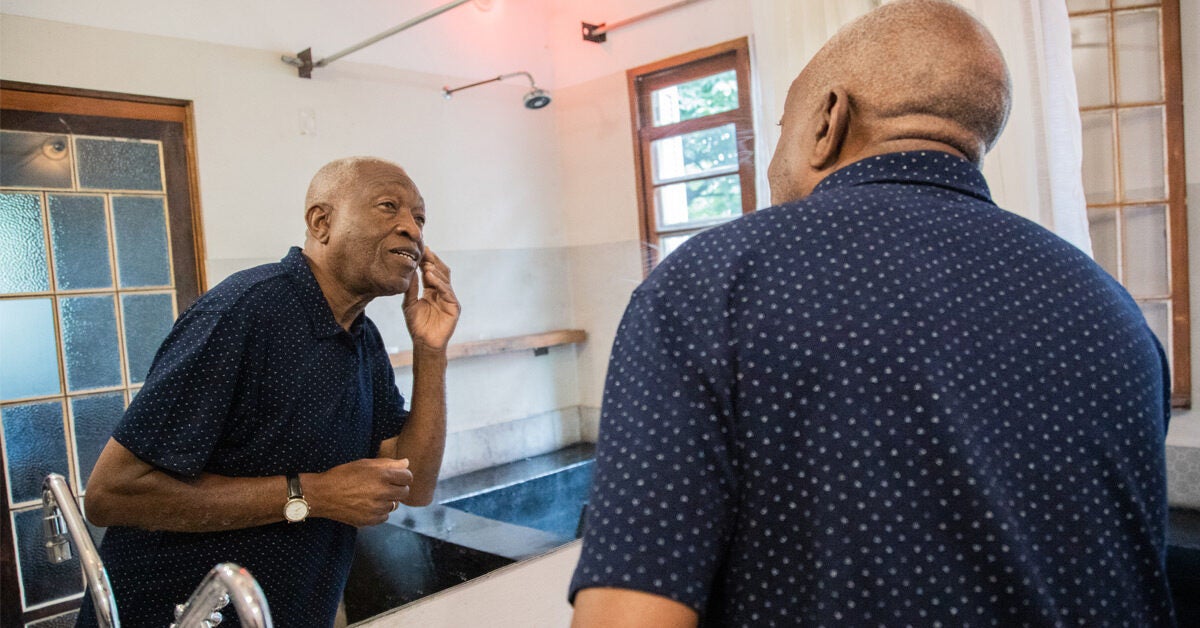Multiple Myeloma Skin Conditions: Types and Treatments - Healthline

Multiple myeloma, also called myeloma, is a rare blood cancer that's estimated to currently affect about 100,000 people in the United States. It makes up about 1 percent of new cancers in people of European descent and 2 percent of cancers in people of African descent.
Skin conditions aren't among the typical signs of myeloma but can occur. The most common signs of myeloma fall under the acronym CRAB:
- Calcium elevation
- Renal (kidney) failure
- Anemia
- Bone problems
Each of these signs can cause additional issues, some of which can affect your skin.
Read on to learn more about the skin conditions associated with myeloma, when they usually appear, and how they're treated.
Multiple myeloma develops in plasma cells, a type of white blood cell that produces proteins called antibodies that tell other cells in your immune system to attack foreign invaders.
Myeloma or treatment for myeloma can cause a variety of skin conditions, including rashes, sores, and bumps. Symptoms can develop due to:
- the accumulation of plasma cells in your skin
- the buildup of abnormal M protein produced by cancer cells
- medication side effects
Less than
Plasmacytoma
Plasmacytomas are tumors caused by the abnormal growth of your plasma cells. They can develop anywhere in your body, including your skin. They're the
Less than
A plasmacytoma that grows outside of your bone and bone marrow is called an extramedullary plasmacytoma. About
Skin plasmacytomas usually present as red bumps or plaques that may form ulcers, or sores on the lining of your stomach or small intestine.
Leukocytoclastic vasculitis
Leukocytoclastic vasculitis is inflammation of your small blood vessels caused by the breakdown of white blood cells called neutrophils. It's
Symptoms include:
A 2018
Autoimmune bullous disease
Autoimmune bullous disease is a group of skin conditions that result from an autoimmune reaction. Although
For example, in a 2018
Pyoderma gangrenosum
Pyoderma gangrenosum is a rare condition that causes large painful ulcers, usually on your legs. It can develop as a result of an abnormal immune response if you have cancer. It usually develops in
One
Bruising and abnormal bleeding
If you have myeloma, you may experience abnormal bleeding or bruising due to a low platelet count. Platelets are blood cells that help your blood clot after an injury.
Bruising or abnormal bleeding may be among the first symptoms of myeloma.
Cryoglobulinemia
Cryoglobulinemia is a
Cryoglobulinemia can be among the first presenting signs of myeloma.
AL amyloidosis
Amyloid light chain (AL) amyloidosis is a disease where abnormal proteins called light chains build up in tissues such as your heart, kidneys, or skin. These light chains can be produced by your cancerous plasma cells if you have myeloma.
In a 2018
More than half of the people in the study presented with bleeding blisters.
Medication side effects
Some medications used to treat multiple myeloma, such as Velcade (bortezomib) and Revlimid (lenalidomide), can cause skin-related side effects such as:
Skin cancer
If you have myeloma, you have impaired immune function, which can increase your risk of secondary cancer.
A 2016
The following gallery shows images of skin conditions associated with multiple myeloma.
Treating the underlying myeloma is critical for treating associated skin conditions. Additional treatments may be used to manage symptoms while undergoing treatment.
Here are a few examples of treatment options.
Some skin conditions are associated with a poorer outlook for people with myeloma. Half of people who develop skin plasmacytoma live
One
Here are some frequently asked questions people have about skin conditions in multiple myeloma.
Are skin issues common with multiple myeloma?
Skin issues aren't among the most typical signs of multiple myeloma. Skin plasmacytomas are
Does multiple myeloma cause skin discoloration?
Skin plasmacytomas usually present on lighter skin as red bumps or whitish plaques that may form ulcers. On
Some other skin conditions associated with myeloma can cause signs such as ulcers or symptoms such as rashes or redness.
Can multiple myeloma treatment cause itchy skin?
Some medications used to treat multiple myeloma, such as Velcade (bortezomib) and Revlimid (lenalidomide), can cause itchy skin. A doctor or healthcare professional can help you determine whether your medications are contributing to your itchiness.
Can skin conditions be the first signs of myeloma?
Some skin conditions such as leukocytoclastic vasculitis can be among the first signs and frequent bruising or abnormal bleeding can be among the first symptoms of myeloma. It's a good idea to see a doctor anytime you notice changes to your skin that don't have an obvious cause.
Skin-related symptoms aren't typical of myeloma, but they can occur due to the cancer or its treatment. The most specific sign of myeloma is a tumor made up of plasma cells called a plasmacytoma, although these very rarely occur in your skin.
A doctor can advise you on how to treat any skin-related symptoms you develop. Many conditions resolve when the underlying myeloma is treated, but medications such as corticosteroids may help manage symptoms.



Comments
Post a Comment